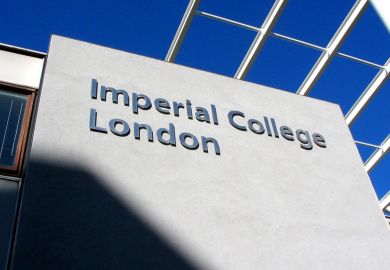Australia’s universities have ramped up their research without blunting its quality, boosting both the volume and the cut-through of their scientific publications.
A national stocktake of research strength has concluded that most Australian universities are consistently performing at or above world class, notching successes particularly in the mathematical and natural sciences.
More than half – 57 per cent – of the research outputs analysed were judged to be above or well above world standard, when evaluated at the level of broad field of research. This compared to 46 per cent when the assessment was last conducted in 2015.
At the narrow discipline level, 69 per cent of research efforts were found to be above world class, an increase from 62 per cent in the previous assessment.
The results, from the Excellence in Research for Australia exercise, were being released in full on 27 March. Education minister Dan Tehan said that the nation exceeded international standards in 11 of 22 broad fields, such as technology, maths, medicine, engineering and earth and environmental sciences.
However, as in past years, the quality of humanities research was less impressive.
Times Higher Education’s analysis of the results suggest that the University of Melbourne tops the country for comprehensive research quality, rating above or well above world standard in all 22 broad fields.
It is followed closely by UNSW Sydney and the University of Sydney, suggesting that the two institutions’ investments in research – largely bankrolled by international tuition fees, after they accelerated their foreign student recruitment about five years ago – is paying off.
THE’s analysis combines quality with breadth. It takes into account both the number of broad fields in which each institution provided research publications for assessment and the average score each field earned from a five-point scale.
As with any ranking, different methodological approaches – such as giving a higher weighting to certain fields, or averaging scores across specific disciplines rather than broad subject areas – would generate different results. THE’s analysis found that many institutions, including the front-running Melbourne and UNSW, were separated by very slim margins.
The analysis also illustrates the competing imperatives of breadth and strength. Some universities that ranked modestly in terms of their average performance in each field improved their standing considerably when their research scope was factored in.
Australia’s powerhouse Group of Eight universities predictably topped THE’s analysis of the ERA results. All eight were assessed in at least 21 of the 22 broad fields, averaging scores above 4* – which equates to “above world standard”.
Each of the eight managed scores of 5* – “well above world standard” – for at least one-third of the broad fields in which they were assessed. UNSW Sydney scored 17 scores of 5* compared to the University of Melbourne’s 14, but the Victorian institution edged out its northern counterpart in THE’s analysis because of its broader research reach.
Macquarie University, Queensland University of Technology and the University of Newcastle were ranked next, with Victoria’s Deakin and La Trobe universities and the University of Technology Sydney in a three-way tie for 12th.
Excellence in Research for Australia 2018: research power standings
Source: ERA 2018/Australian Research Council
The ERA results offer little evidence that universities are inflating their scores by concealing areas of weakness.
Of the 40 universities that submitted enough material to meet the Australian Research Council’s assessment benchmarks, 17 increased the number of fields in which they submitted material – led by the universities of Southern Queensland and the Sunshine Coast, both of which were assessed in six more fields than in 2015.
Another 20 universities maintained the number of fields in which they were judged, with just three assessed in fewer fields.
Mr Tehan said that Australia’s overall research quality was improving despite an increase in the outputs evaluated, with more than 500,000 publications analysed last year. This compared to 435,000 in 2015, 415,000 in 2012 and 335,000 when the assessment was first conducted in 2010.
Undertaken by the Australian Research Council, ERA assesses research from journal articles, conference papers, books and book chapters, creative works, research reports and other “non-traditional” outputs.
The ARC said that more than 2,600 “units of evaluation” had been assessed in this round, up from 2,460 in 2015. The increase in publications offered for assessment was particularly pronounced in medical and environmental sciences, education and psychology.
The ERA highlights areas of research strength and weakness, pinpoints where taxpayer dollars are well spent and highlights universities’ performance on the world stage. Unlike the UK’s research excellence framework, however, its results do not determine the allocation of research funding.




